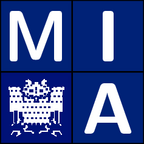
Welcome to the homepage of the lecture
Image Acquisition Methods
Winter Term 2022
Home
About Us
People
Teaching
Research
Publications
Awards
Links
Contact
Internal

Image Acquisition Methods
Two Computer Science Teaching Awards
(Summer Term 2014 and Winter Term 2018/19)
Lecturer:
Dr. Pascal Peter
Winter Term 2022
Lecture and Tutorial times:
Lectures: Thursday 10-12 c.t.
First Lecture: Thursday, November 3, 2022
Tutorials:
Slot 1: Tuesday 8:30-10 s.t.
Slot 2: Tuesday 10-12 c.t.
First Tutorial: Tuesday, November 15, 2022
Announcements –
Description –
Entrance requirements –
Tutorials –
Exams
Lecture notes/Assignments –
References
For detailed information at a glance, consult our welcome flyer.
11/11/2022 Registration is now closed.
20/10/2022 Registration is now open.
25/08/2022 Website is online. Registration and
more details on lecture and tutorials time will be available closer
to the start of the semester.
Motivation: The course is designed as a supplement for image processing lectures, to be attended before, after or parallel to them. In order to choose the right image processing methods for a given image, it is important to know what the image data represents and what specific properties it possesses.
Teaching Goals: Therefore, in this lecture, participants learn:
- what digital images are,
- how they are acquired,
- what they encode and what they mean,
- which limitations are introduced by image acquisition.
Contents:
A broad variety of image acquisition methods is described, including
imaging by virtually all sorts of electromagnetic waves, acoustic
imaging, magnetic resonance imaging and more. While medical imaging
methods play an important role, the overview is not limited to them.
Basic mathematics courses are recommended.
Basic knowledge in physics is helpful, but the lecture
is designed to be self-sufficient in this regard.
Assignments are designed for group work. You are encouraged to connect with your fellow students and solve the problems together. The lecturer will be available to assist you and check your solutions. For all assignments, a written solution is also offered online.
If you have questions concerning the tutorials, please do not hesitate to contact Pascal Peter.
There will be two closed book written exams:
The first written exam will take place on Monday, February 13, 2023
from 2:00 to 4:00 pm in Building E2.2, Günter Hotz Lecture Theatre.
The second written exam will take place on Thursday, March 30, 2023
from 2:00 to 4:00 pm in Building E2.2, Günter Hotz Lecture Theatre.
You can find the detailed rules for our exams in
the self test assignment
in the Teams file repository.
You can participate in both exams, and the better grades counts.
Please remember that you have to register online for the exam
in the HISPOS system of the Saarland University.
If you cannot attend the exam, contact Pascal Peter as early as possible.
In case you have proof that you cannot take part for medical reasons or you
have another exam on the same day, we can offer you an oral exam as a replacement.
Note that we need written proof (e.g. a certificate from a physician/Krankenschein)
for the exact date of the exam.
Lecture content in form slides and assignments are available for
download via Microsoft Teams. Access will be granted after
registration. In addition, we will provide pre-recoreded lecture
videos from previous semesters.
Note that the initial registration requires manual confirmation and
can thus be delayed a bit.
The assignments and the source code needed for the programming assignments will be
provided here during the semester.
- B. Jähne, H. Haußecker, P. Geißler, editors, Handbook of Computer Vision and its Applications. Volume 1: Sensors and Imaging. Academic Press, San Diego 1999.
- S. Webb, The Physics of Medical Imaging. Institute of Physics Publishing, Bristol 1988.
- C. L. Epstein, Introduction to the Mathematics of Medical Imaging. Pearson, Upper Saddle River 2003.
- R. Blahut, Theory of Remote Image Formation. Cambridge University Press, 2005.
- A. C. Kak, M. Slaney, Principles of Computerized Tomographic Imaging. SIAM, Philadelphia 2001.
- Articles from journals and conferences.
Further references will be given during the lecture.
MIA Group
©2001-2023
The author is not
responsible for
the content of
external pages.
Imprint -
Data protection